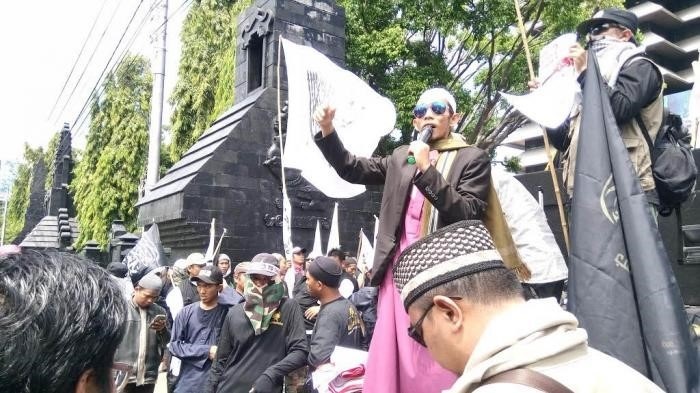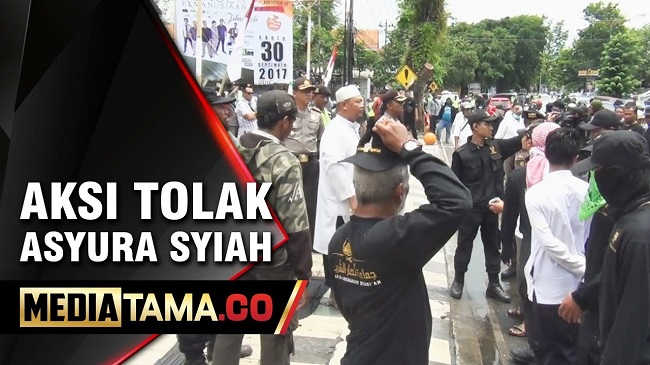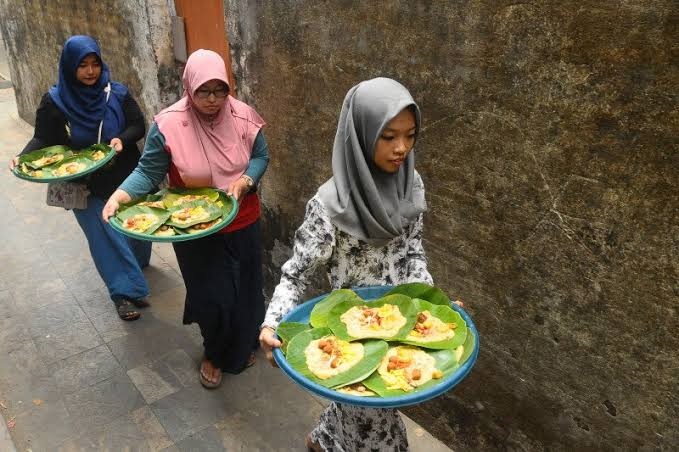Police and interfaith activists are helping defuse tension and safeguard minority expression
Yunantyo Adi Setiawan
Current reforms in the Indonesian political landscape have opened up space for the expression of diverse beliefs and the practise of various religious rituals. This in turn has given birth to a number of social tensions around newly visible religious ideologies. In Semarang, the Syiah community’s day of celebration for Asyura is an example of this. I was involved in advocating for the rights of Syiah followers to commemorate Asyura in Semarang between 2016 and 2018, along with other interfaith activists who provided support to Syiah residents across Central Java.
In 2016, despite the fact that it was already the fifteenth year that the city of Semarang had been the focal point for Asyura celebrations in Central Java, this commemoration was opposed by various militant Islamist groups. The reason for this rejection was, among other things, the rumour that during the celebration of Asyura, there would be bitter verbal attacks against the Prophet Muhammad and his wife and that there would also be a session where participants self-harmed. Apart from that, the opponents also viewed the Syiah community as heretical and argued that the ritual manifestation of Shi'ite beliefs would ignite conflict within the Muslim community.
On 6 October 2016 after mediation organised by the Semarang City Police failed to produce any results, opponents of the event brought their complaint to the Central Java Regional Police. The head of the Central Java Police Intelligence Directorate was of the opinion that the commemoration of Asyura fell under the right of expression and was therefore protected by the law. He offered to mediate between the opposing Islamist groups and the Asyura organising committee. The committee stated its willingness to participate in the mediation but the opposition groups claimed that mediation was not necessary and threatened that if the police did not disband the Asyura event, they would do so themselves.
Following a discussion between the Regional Police and the Asyura organising committee, the Police High Commissioner said that the planned Asyura activities could not continue if a new location capable of accommodating the thousands of participants could not be found. Ultimately, the commemoration that was originally slated for the Cultural Centre Building was moved in the end to a local mosque in North Semarang.

Tight security
On 11 October 2016 around 1000 Syiah followers from various districts and cities in Central Java attended the Asyura commemoration under tight police security. While the Asyura event took place, hundreds of fundamentalist opponents, also from various districts and cities, staged a protest in front of the office of the governor of Central Java and the Central Java Parliament. The demonstrators demanded that the Central Java Indonesian Ulama Council (MUI) issue a fatwa against Syiah, and requested that the governor issue a ban on Asyura commemorations throughout Central Java.
Those who rallied included the Solo Raya National Anti-Shi'a Alliance (ANNAS), the Jogja Ukhuwah Islamiyah (AM FUI) Youth Forum, the Korwil Indonesia Mualaf Centre, the Pekalongan Islamic Defenders Front (FPI), the Da'wah Islamiyah Indonesia (DDII) Java Board Central, Surakarta City Syariah Council (DSKS), Semarang Islamic Community Forum (FUIS), Jamaah Anshorusy Syariah (JAS), Laskar Jihad leader Jafar Umar Thalib and other mass organisations from Pati.
The hearing was quite heated with neither the local government or the Central Java MUI chairman KH Ahmad Darodji wanting to dissolve the Asyura activities, as was being demanded. As for the security issue for Asyura, the government and MUI handed responsibility to the police. The demonstrators once again threatened to prevent the Asyura commemoration event if the government would not.
When the demonstrators arrived, they were confronted by armed police at about 500 metres from the celebrations and they did not dare cross the police line. Armed police inspected every car that passed. At the Asyura event site, Abiyoso Seno Aji answered questions from the media, saying that Asyura activities were protected by law, so it was the police's duty to maintain security. The event ultimately continued until the scheduled end of the program.

In anticipation of a similar situation in subsequent years, and to evaluate the handling of the Asyura event and related protests in 2016, the Semarang City Police coordinated with various religious and government agencies to conduct hearings about the holding of Asyura.
The meeting resulted in several agreements and recommendations:
- The commemoration does not conflict with Pancasila, the 1945 Constitution or the Unitary State of the Republic of Indonesia (NKRI);
- It should not be said to go against any existing law;
- During the commemoration, NKRI symbols such as red and white flags and banners should be shown, and the Indonesia Raya national anthem should be sung;
- The Syiah community should not practise any rituals that may cause themselves injury;
- They should not conduct public marches;
- They should not curse or vilify the wife or companions of the Prophet Muhammad.
The Asyura event committee agreed to follow these recommendations.
Intolerance in subsequent years
On 1 October 2017 the same groups which demonstrated against previous Asyura events again protested – this time at the UTC Hotel in Semarang. Speeches during the demonstration stated that the commemoration of Asyura was closely related to the teachings of Shi'ism (Shi'ite Islam) and therefore not part of Islam.
The demonstrators carried banners that, among other things, read ‘Reject Syiah and PKI’. The sharpening of religious-based tensions in the post-reform years has often been framed within anti-communist ideological sentiments. Possibly, the demonstrators invoked the stigma of communism and the PKI (Indonesian Communist Party) to attract the sympathy of the Ministry of Religion, the Indonesian Ulema Council, local government or various anti-PKI groups.
The police did not respond to the anti-PKI rhetoric, and stuck by their decision to provide security for Asyura wherever the event occurred. The police pointed to a letter from the Ministry of Religion, sent in response to a statement by the Anti-Syiah National Alliance (ANNAS). In essence the response letter stated that the Syiah community was not a misguided sect.
In 2017 the event took place under heavy police security. Additional support and security assistance was provided by interfaith social activists and other youth organisations such as the Garuda Nusantara Patriots led by Gus Iwan Cahyono and the Indonesian National Patriot Guard (Ganaspati). Around 4000 participants attended this Asyura commemoration in Semarang.
Nevertheless, religious intolerance and prejudice against minorities continues to influence the social landscape. The tensions around Asyura in Semarang in 2016 and 2017 reflect widespread public sentiment. The following year, in 2018, some groups ventured to terrorise the Nuruts Tsaqolain Mosque, the only Syiah mosque in the city of Semarang – something that had never happened before. On the day of Asyura itself, 20 September 2018, the event nevertheless took place at the Majapahit Convention Centre. Again, around 4000 Syiah followers from various districts and cities attended and this time there were no demonstrations from opponents of Asyura. And again in 2018 protection was provided by the police and interfaith activists, Ganaspati and others gave their support.
The successful continuation of the Asyura events ultimately shows how cooperation by the state, the provision of legal protection and the support of local organisations can together foster a more peaceful and tolerant climate for religious minorities.
Yunantyo Adi Setyawan (yunantyo2000@gmail.com) is a social activist and lawyer in Semarang, and member of the Semarang branch of Perhimpunan Advokat Indonesia (PERADI).
